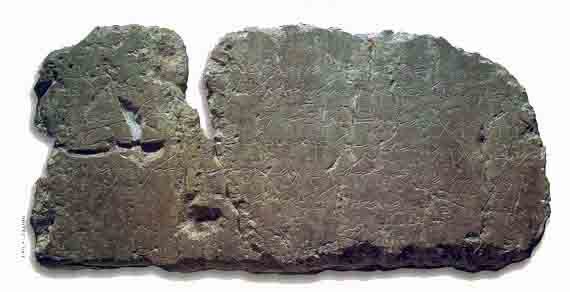Image Details

Erich Lessing
The Siloam inscription. Engraved on the wall of Hezekiah’s Tunnel in Jerusalem, just 20 feet from its southern outlet, this paleo-Hebrew inscription describes how two teams of diggers working from each end of the tunnel managed to meet in the middle: “And this was the way in which it was cut through: While the stonecutters were still wielding their axes, each man toward his fellow, and while there were still 3 cubits to be cut through, they heard the sound of each man calling to his fellow, for there was a fissure (?) in the rock to the right and the left. And on the day the tunnel was driven through, the stonecutters hewed (the rock), each man toward his fellow, axe against axe; and the water flowed from the spring to the pool, for 1,200 cubits.”
According to Shea, the tunnel—which diverted water from the Gihon Spring, the city’s only natural water source, to the other side of the city—was built following the first siege to safeguard the water supply in case of another attack. Hezekiah did not have sufficient warning to dig the tunnel before the 701 B.C. attack.
